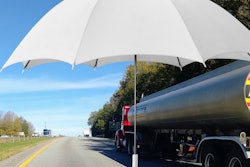Lee Jester’s ship, the Adagio, came in early. Not on the morning tide, but strapped and supported on the back of a drop-deck trailer. It was a typical July morning in the San Francisco Bay area when Bruce Smith climbed out of his Freightliner at Nelson’s Marine boatyard on the Alameda waterfront – overcast and cold but with a promise of sunshine later in the day. Smith had started his trip in Bellingham, Wash., two days earlier. He had driven into the boatyard in the wee hours of the morning, well before his appointed time of 8 a.m.
Anxious for Smith’s arrival, Jester arrived at the boatyard before 7 a.m. Smith’s load today means a great deal to Jester. It’s a 1929 Blanchard Lake Union Dreamboat. Even strapped to a trailer, the 30-foot wooden beauty evokes a sense of nostalgia with her understated elegance and classic line. But while the boat sported a recent coat of paint and varnish, she was showing her age below the waterline. “There’s leaking in the bilge area we have to take care of, and we plan to do some engine work,” Jester says of the newly purchased yacht he plans to dock nearby. Fortunately, he does woodworking for a living and his furniture shop is close by.
Located on a former Navy base, the boatyard’s neighbors include a small fleet of ships operated by the U.S. General Services Administration. A reminder of the area’s military past, the aircraft carrier U.S.S. Hornet, veteran of World War II and the Korean and Vietnam conflicts, lies docked nearby.

Inside the boatyard a flotilla of pleasure craft of all sizes and shapes rests on keel blocks and hull stands. The fleet includes sailboats, houseboats, power yachts and even a Chinese-style junk. The vessel sank a few years ago, according to its elderly owner, and is now being renovated.
By a little after 7 a.m. on this Friday, the boatyard comes alive as crews move boats about with a travel lift. “Fridays are always busy,” a yard worker says. “Everybody wants their boat in the water.” Smith and Jester are told they will have to wait an hour or more to unload, since there are four boats ahead. As they wait, the travel lift puts a 35-foot sailboat in the water, moves another inside the boat shop and then relocates a massive houseboat.
Smith removes and stores the tie-down straps and hull pads that had secured the 30-foot cargo to the drop-deck trailer. Smith says he always rolls and stores his straps right after taking them off a boat. “That way, I know where they are the next time I need them.” He likes to run with the same trailer for the same reason. “I know where everything is and I know I’ve got everything I need.”
Jester surveys his boat inside and out. It appears to have made the journey from the Pacific Northwest no worse for wear, except for a front window track.
As they wait, both men field a constant stream of questions from admiring yard workers and boat owners asking about the new delivery. Wooden boats draw a crowd, Smith notes. He should know; he’s been hauling boats for the better part of 16 years. Smith, who lives in Port Townsend, Wash., is also a boatman, having left the road for a time to run a boat restoration and services company. He also sold boats and held a skipper’s license. “I’m a boater,” Smith says, and on this day he certainly looks the part, clad in boat shoes and shorts with sunglasses hanging around his neck.
Smith likes dealing with boat owners and marina or boatyard personnel because for the most part, the “people are real nice. Have you ever had to deal with union warehouses? That’s why I like hauling to these places.” Besides, he says, “I’d much rather sleep at a marina than on some side street.”
Hauling boats is a special kind of business for a number of reasons, Smith says. There are the permits, strange routes, low bridges, loading and unloading. “I’m not really a truck driver,” he laughingly says. “I’m a nautical relocation engineer. Anyone can drive a truck, not anyone can haul boats.” He runs about 85,000 miles a year. “The pay is good enough we don’t have to worry about miles too much,” he adds. The pay goes up as the load gets wider and higher, according to Smith.
“It’s a niche business,” says Smith’s boss, Gerald Parker, owner of Dudley Boat Transportation. Speaking in the company’s office in Tacoma, Wash., Parker says the business involves unique pressures. “Hauling these things is just like hauling a time bomb or nitroglycerin. This is a guy’s boat and his ego is involved here. Plus, for the driver it’s highly labor-intensive, it’s not like loading groceries.”
Preparing the trailer for loading can be “like a geometry nightmare,” Parker says. Plus, many of the loads are over-dimensional. “This is a different animal,” he says. “Everything is 10-wide plus.”
Dudley runs 10 tractors, mostly in the Western states, and some into Mexico and Canada. The company specializes in sailing yachts and other over-dimensional boats, with most of its loads following the I-5 corridor. Recently, Dudley delivered a 64-foot-long, 16-foot-wide tour boat to Lake Tahoe. “We had police escort, pilot cars and the whole works,” Parker says. The boat was designed to carry up to 90 people on tours around the lake.
Parker relies on his drivers’ experience with boats to make sure no time bombs go off. Like Smith, many have been with the company for more than 15 years. “You are only as good as your drivers,” Parker says. “We have some long-time drivers with 15 to 20 years. Once you learn this thing, you aren’t going anywhere else.”
Plus, Parker says boat haulers get more respect. “It’s not like hauling dry vans; marina people are usually friendly and treat drivers well.” Each boat requires a different setup, which makes each load unique. “Drivers like variety,” Parker says. “Every load is a different load.”
But it is a demanding job. “You might as well be hauling nitro,” Parker says. “It’s personal property you are hauling.”
Due to the high value of much of that personal property, Parker says his company carries up to $1 million of insurance. The company hauls an average of 15 boats a week. Because of the nature of their business, most of his drivers are home seven to eight nights a month, Parker says.
Dudley’s trucks run only 75,000 to 80,000 miles a year. With many loads, they must pull off the road between dusk and dawn. “Hours-of-service is not a factor with our business,” Parker says. “You have to shut down at dark anyway.”
Loading a boat takes the most time, as the driver must set up a rack to hold each boat. “It’s just a big erector set,” Parker says, with various lengths of steel tubing, extenders, angles and hull pads. Smith says loading takes 30 minutes to two hours, depending on the boat type.
“Powerboats have to be blocked under the keel to make sure they clear the trailer wheels,” Smith says. With sailboats, clearing the rear tires is not a problem, as their wineglass shape puts most of the width well above ground level. “With sailboats, people will ask if the load is top-heavy. But if they were top-heavy, they couldn’t sail,” he notes.
Bob Manning says he has “been fussing” with boat hauling for 30 years. When we visited him last fall, his company, Manning Truck Services, Arlington, Wash., was building custom trailers for Marine Xpress, the trucking operation owned by U.S. Marine, a division of Brunswick. U.S. Marine builds Bayliner and other boats. Before starting his business, Manning worked with the company’s trucking operation in a number of capacities. The 53-foot trailers his company builds can handle up to eight small boats or yachts over 40 feet.
A travel lift raises the 30-foot 1929 wooden boat Adagio from a drop-deck trailer on its way to the water.
Boats are particularly fragile freight, Manning notes. “Hauling boats is like hauling eggs – you break one, you can’t put it back together again.”
Manning says he decided to design and build his own trailers after a lot of trial and error. “We broke a lot of trailers before we started to build our own,” he says, noting that changes in boat design demanded changes in trailer design. “A lot of learning went into loading boats,” Manning continues. With his trailers, drivers build a steel cradle or frame on the trailer in which the boat rests. “You tie the boat to the steel, then tie the steel to the trailer.” he says. The method makes loading easier, Manning adds.
Driver Lou Peterson agrees. “The load steel makes a difference,” he says. That day he was loaded with a 40-plus-foot Bayliner. Peterson, who lives in Florida, says he has been with U.S. Marine 17 years delivering boats cross-country.
When trailer building slows or he “gets fed up with the paperwork,” Manning says he hits the road in one of his own trucks hauling boats or anything else that fits on one of his trailers. “These trailers have a lot of applications besides boats,” he says. “They are well suited for unusual shapes like tanks, food processing machinery and other heavy loads.”
Just as each load is different, the routes change as well. The routes largely depend on the load and the permit, Smith says. “A half-inch in height or width can make a difference on the route you go on.” With his years of experience, he says he’s covered just about all the routes along the West Coast. “I know where all the low tree branches and low wires are,” he says. “I’ve been doing this so long, I know more about the laws in some states than the highway patrol.”
There are plenty of laws to keep track of. Each state imposes different limits on permitted loads that include route restrictions and driving restrictions. In many states, over-wide loads are restricted to early morning hours during weekends, and must be off the road between dusk and dawn.
Then there are bridges that are lower than the posted height. In such cases, Smith says they sometimes “ramp” around low freeway bridges, where he will drive up the off ramp and right onto the onramp across the bridge. Other times clearing low bridges can mean long stretches out-of-route.
“The cell phone has made this job easier,” Smith says. “From calling for permits to calling the pilot cars, my cell phone really comes in handy.”
The one-and-a-half-hour wait for the travel lift turns into three hours. At 11 a.m., the yard crew positions the lift over the Adagio and lifts it from the back of Smith’s trailer. Smith pulls his truck out of the yard and the travel lift carries the 30-footer across the street, then lowers it into the bay. Jester hops aboard and prepares the boat for the short trip to its slip.
Smith isn’t sure where he’ll head for his next load. He says he will either pick up a racing sailboat in Berkeley or run to Southern California to pick up a 35-foot powerboat. He hopes the sailboat will be ready, so he can avoid the empty miles south. Either way, he looks forward to the next load. “As a former boater, it’s a joy working with boats and their owners,” he says. If you haul boats, your ship comes in every day.







